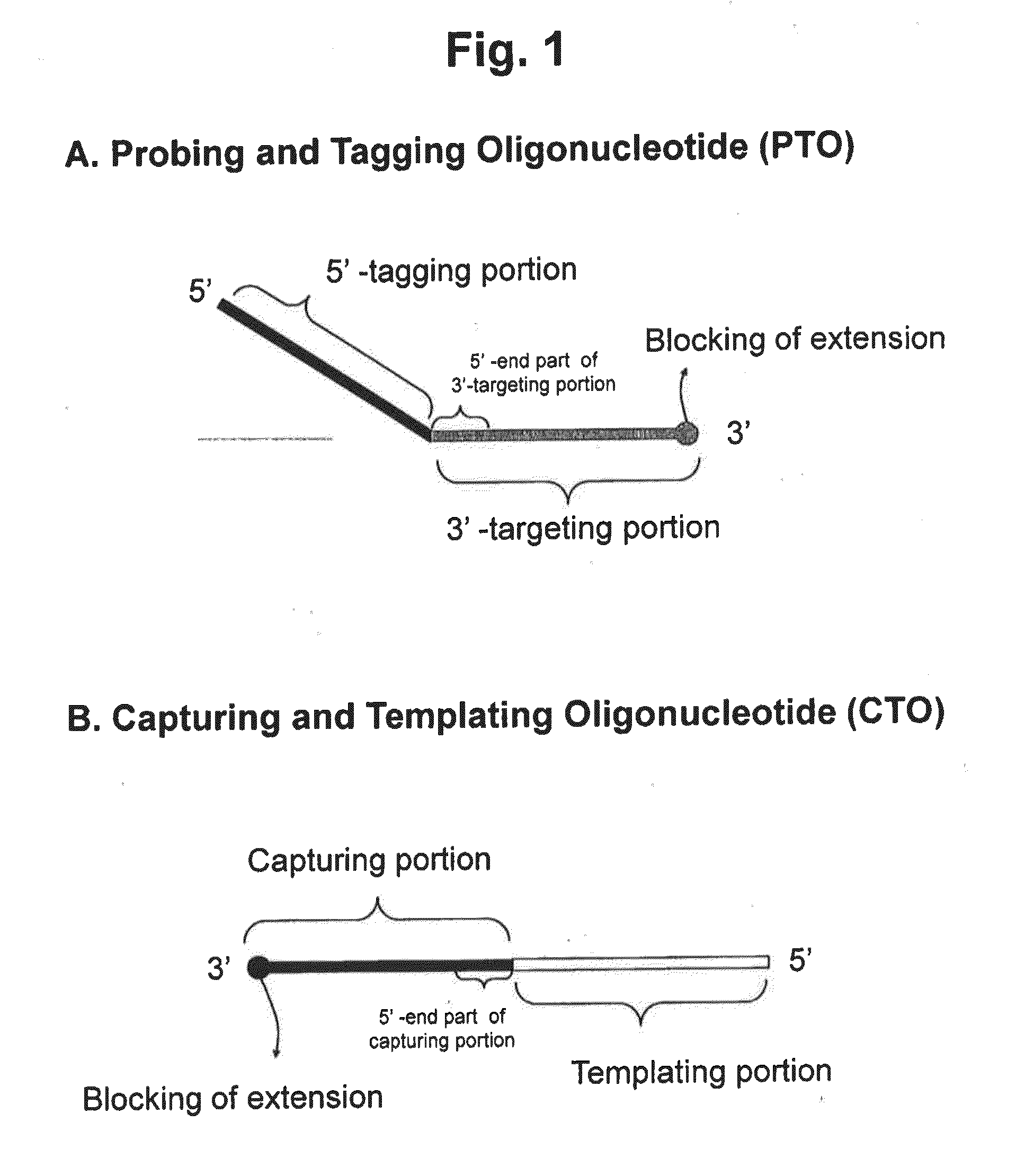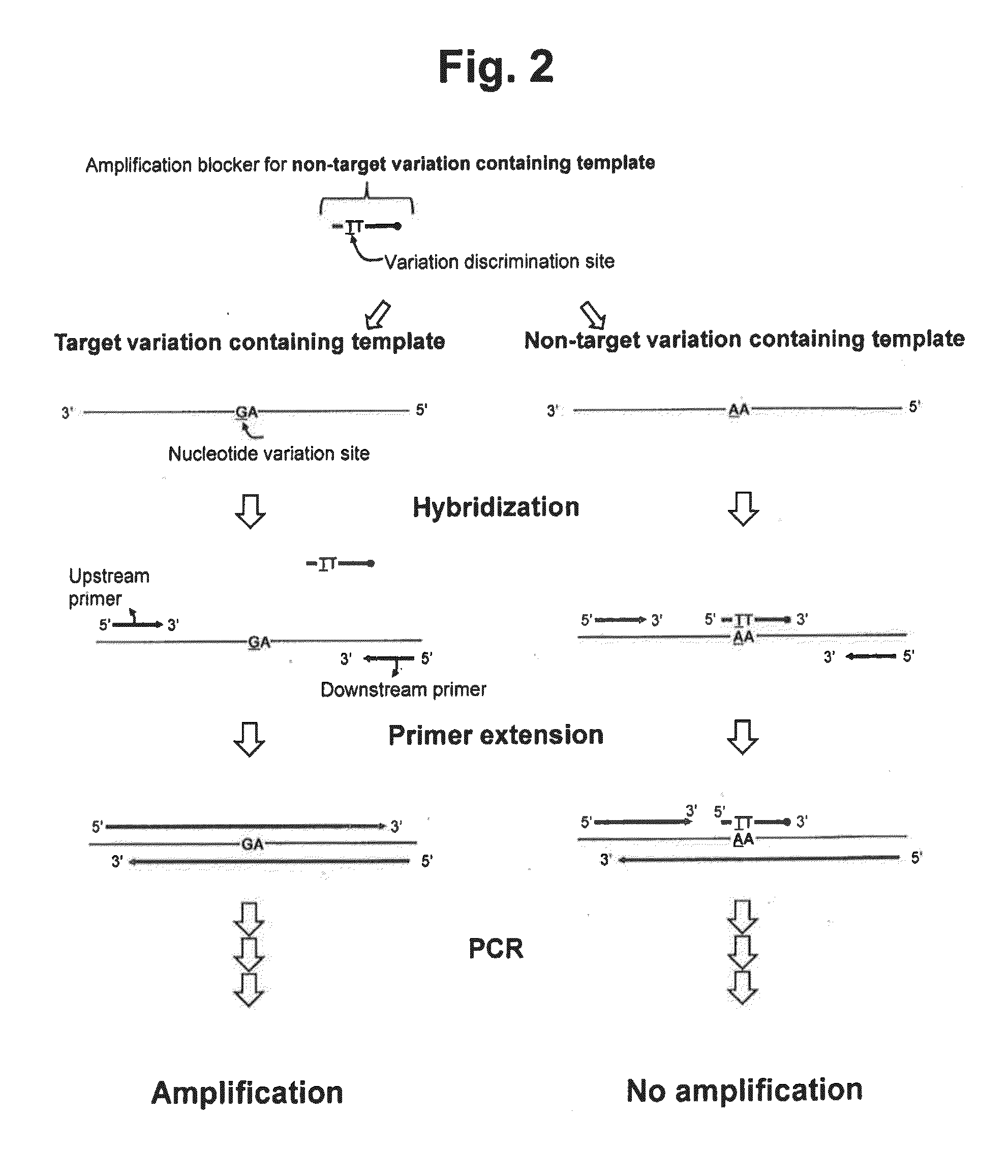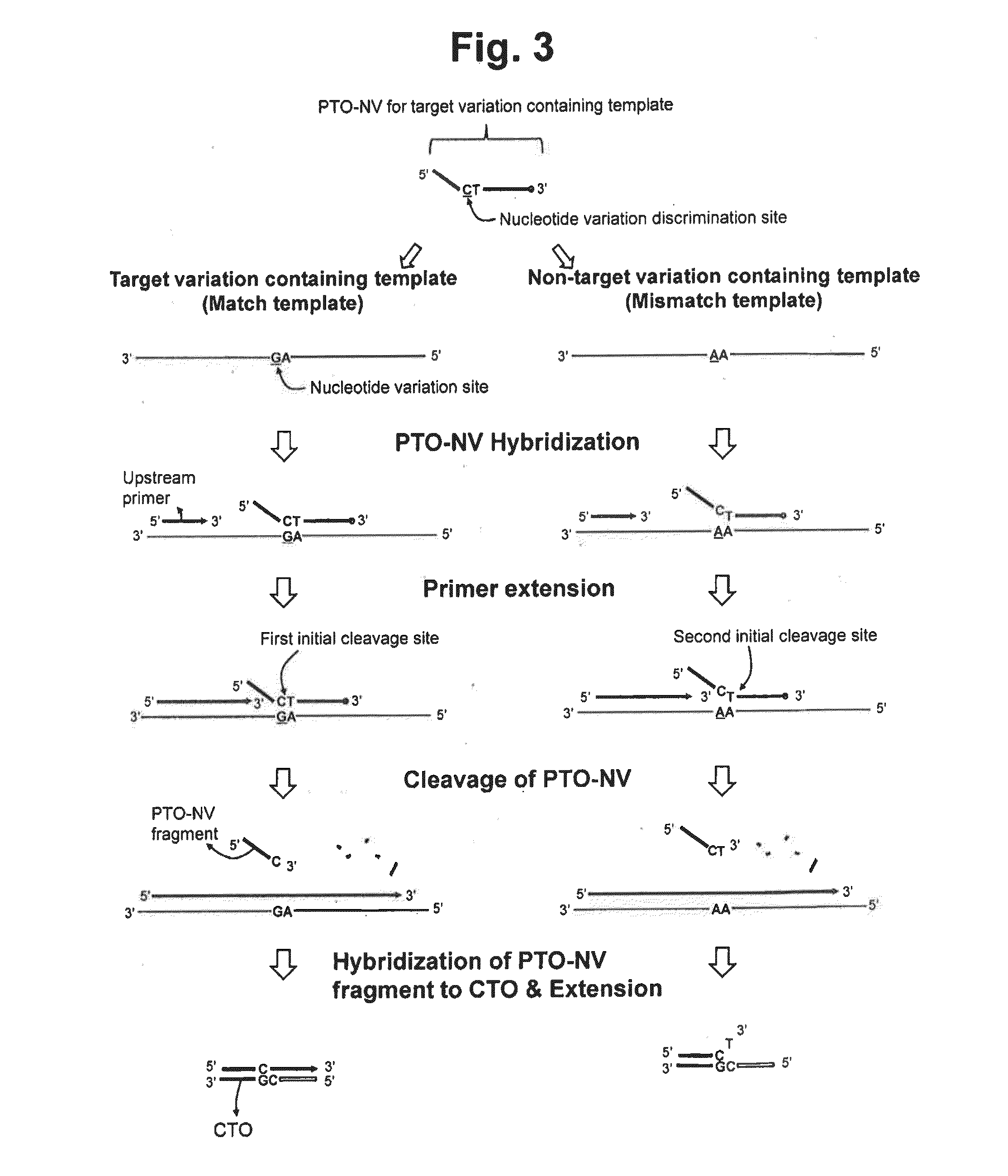Detection of nucleotide variation on target nucleic acid sequence
- Summary
- Abstract
- Description
- Claims
- Application Information
AI Technical Summary
Benefits of technology
Problems solved by technology
Method used
Image
Examples
first embodiment-1
Intrastrand Interactive-Dual Label on the CTO
[0211]The exemplified embodiment is described with referring to FIG. 5. The templating portion of the CTO has a reporter molecule and a quencher molecule. The PTO-NV hybridized with the target nucleic acid sequence is digested to release the first fragment and the first fragment is hybridized with the capturing portion of the CTO and extended to form the extended duplex.
[0212]When the extended duplex is formed in the step (d), the reporter molecule and the quencher molecule on the CTO are conformationally separated to allow the quencher molecule to unquench the signal from the reporter molecule; wherein when the extended duplex is melted in the step (e), the reporter molecule and the quencher molecule are conformationally adjacent to each other to allow the quencher molecule to quench the signal from the reporter molecule, such that the target signal is given to indicate the presence of the extended strand in the step (e).
[0213]The expres...
first embodiment-2
Intrastrand Interactive-Dual Label on the PTO-NV
[0225]The 5′-tagging portion of the PTO-NV may have a reporter molecule and a quencher molecule. The PTO-NV hybridized with the target nucleic acid sequence is digested to release the first fragment comprising the 5′-tagging portion with the reporter molecule and the quencher molecule. The first fragment is hybridized with the capturing portion of the CTO.
[0226]When the extended duplex is formed in the step (d), the reporter molecule and the quencher molecule on the first fragment are conformationally separated to allow the quencher molecule to unquench the signal from the reporter molecule; wherein when the extended duplex is melted in the step (e), the reporter molecule and the quencher molecule are conformationally adjacent to each other to allow the quencher molecule to quench the signal from the reporter molecule, such that the target signal is given to indicate the presence of the extended strand in the step (e).
[0227]According t...
first embodiment
[0245]The templating portion of the CTO may have a single fluorescent label. The PTO-NV hybridized with the target nucleic acid sequence is digested to release the first fragment. The first fragment is hybridized with the capturing portion of the CTO and extended to form the extended duplex. By the formation of the extended duplex, the fluorescent intensity from the single fluorescent label becomes increased. When the extended duplex is melted in the step (e), the fluorescent intensity from the single fluorescent label becomes decreased, such that the target signal is given to indicate the presence of the extended stand in the step (e).
[0246]According to an embodiment, the single label may be located at any site on the CTO, so long as the signal level from the single label is changed depending on melting of the extended duplex.
[0247]According to an embodiment, the single label is linked to the templating portion or to the capturing portion of the CTO.
[0248]Where t...
PUM
| Property | Measurement | Unit |
|---|---|---|
| Denaturation enthalpy | aaaaa | aaaaa |
Abstract
Description
Claims
Application Information
 Login to View More
Login to View More - R&D
- Intellectual Property
- Life Sciences
- Materials
- Tech Scout
- Unparalleled Data Quality
- Higher Quality Content
- 60% Fewer Hallucinations
Browse by: Latest US Patents, China's latest patents, Technical Efficacy Thesaurus, Application Domain, Technology Topic, Popular Technical Reports.
© 2025 PatSnap. All rights reserved.Legal|Privacy policy|Modern Slavery Act Transparency Statement|Sitemap|About US| Contact US: help@patsnap.com



